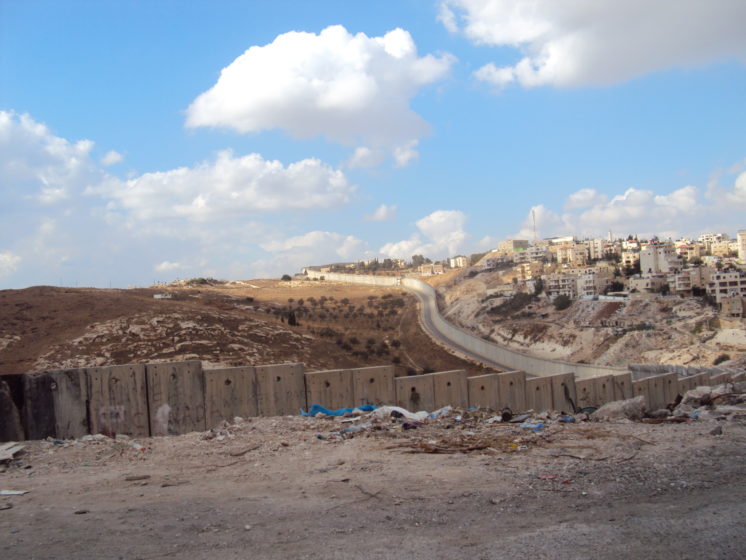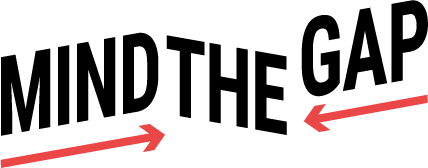The Mexican company CEMEX has contributed to the unlawful Israeli occupation of Palestinian territories by providing materials for the building of illegal structures, while denying any wrongdoing. This illustrates how corporations may align with suppressive states in order to follow their own interests.
 Photo: Project on Organizing Development Education and Research
Photo: Project on Organizing Development Education and ResearchReadymix, the subsidiary of Mexican company CEMEX, has provided materials for the building of Israel’s Annexation wall in and around the West Bank.[1] The wall violates the human rights of the Palestinian communities it affects – preventing access to basic services including health and education, isolating Palestinians from their friends and families, and undermining livelihoods.[2] Furthermore, land for construction of parts of the Barrier inside the West Bank was confiscated from Palestinian landowners. On 9 July 2004, the International Court of Justice issued an Advisory Opinion stating that the part of the Barrier, which runs inside the West Bank, violates Israel’s obligations under international law and should be dismantled.[3]
CEMEX also has four ready-mix concrete plants located in the Israeli Occupied Palestinian Territory[4] and provides Israel with materials for the building of Israeli settlements and other structures inside Palestinian Territory.[5] These settlements are illegal under international law.[6]
Relying on mechanisms created by the Israeli government, CEMEX presents a very different picture of its activities in the Occupied Palestinian Territory. First, in response to a Norwegian pension divesting from CEMEX on the basis of concerns about their operations in the West Bank in 2015, CEMEX stated that its “concrete plants are located in legal settlements approved by the Israeli government and validated by the Supreme Tribunal of Justice of Israel”.[7] Similarly, during the review procedure of this case study, the company states that “The plants referred to in the report are within industrial zones in the Israeli administered Area C of the West Bank and hold all required permits and authorizations to conduct their activity.”[8] The company aligns itself with the Israeli State position, thereby ignoring the illegality of the Israeli settlements under international law.
Second, on its website CEMEX states that it operates responsibly in the Occupied Palestinian Territories and that its “facilities’ concrete production […] is used for residential and infrastructure projects, meeting the demands of all local communities, regardless of race or faith”.[9]
Finally, the company diverts attention from the human rights impacts of its operations by capitalising on Israel’s depiction of CEMEX as a sustainable and environmentally responsible company. In the section of its website dedicated to showing the company’s sustainability, CEMEX mentions the fact that it has repeatedly won Israeli awards for sustainability and for its contribution to the local community.[10]
CEMEX is using the Israeli state’s attempt to legitimise the settlements to justify its own business activities, while these settlements are considered to be illegal under international law.[11] CEMEX also fails to mention the human rights violations suffered by Palestinian communities as a result of the Barrier, the building of illegal Israeli settlements in Palestinian Territories and the occupation at large. However, by providing the necessary construction materials for illegal structures and by operating on occupied territory previously owned by Palestinians, it could be argued that CEMEX is facilitating Israel’s control over occupied land and assisting its expansionist policies. This means the company could be considered complicit, alongside the Israeli state, in human rights violations of Palestinian communities. Needless to say, the company does not agree with this conclusion: “We believe it is unjustified and inaccurate to infer that CEMEX is allegedly complicit in human rights violations of Palestinian communities.”[12]
[1] This page on the Ready Mix website shows a picture of the Gilo Bridge, the caption says (in Hebrew); “Shielding of Gilo Bridge”: ReadyMix. “Picture Title on ReadyMix Webpage.” Accessed April 7, 2020. http://www.readymix.co.il/BuildaGate5/general2/data_card.php?Cat=~8~~344373603~Card4~~35~&ru=&SiteName=readymix&Clt=&Bur=276879926.
[2] Al-Haq. “The Annexation Wall and Its Associated Regime,” July 19, 2011. http://www.alhaq.org/publications/8136.html.
[3] United Nations Office for the Coordination of Humanitarian Affairs, “Occupied Palestinian Territory: West Bank Barrier,” https://www.ochaopt.org/theme/west-bank-barrier (accessed November 6, 2019).
[4] ReadyMix. “The Group’s Locations.” Accessed April 7, 2020. http://www.readymix.co.il/BuildaGate5/general2/company_search_tree.php?SiteName=readymix&NewNameMade=73&Referral=tree&ValuePage=Card2.
[5] Gustavo Castro Soto, “Cemex viola derechos del pueblo palestino,” Desinformémonos, October 10, 2017, https://desinformemonos.org/cemex-viola-lderechos-del-pueblo-palestino/ (accessed November 6, 2019); Who Profits. “Cemex.” Accessed April 7, 2020. https://www.whoprofits.org/company/cemex/; Who Profits. “Readymix Industries (Israel) Ltd. Group.” Accessed April 7, 2020. https://whoprofits.org/company/readymix-industries-israel-ltd-group/.
[6] “The Occupying Power shall not deport or transfer parts of its own civilian population into the territory it occupies,” see International Committee of the Red Cross“, Geneva Convention (IV) relative to the Protection of Civilian Persons in Time of War,” Article 28, 33, and 49, August 12, 1949, https://ihl-databases.icrc.org/ihl/385ec082b509e76c41256739003e636d/6756482d86146898c125641e004aa3c5 (accessed November 6, 2019).
[7] Business & Human Rights Resource Centre, “CEMEX response (unofficial translation by Business & Human Rights Resource Centre),” September 9, 2015, https://www.business-humanrights.org/en/cemex-response-unofficial-translation-by-business-human-rights-resource-centre (accessed November 6, 2019).
[8] CEMEX. “Email: Review Comments,” May 13, 2020.
[9] CEMEX S.A.B. de C.V., “Our Neighbors,” https://www.cemex.com/sustainability/stakeholder-engagement/our-neighbors (accessed November 6, 2019).
[10] ReadyMix. “מיגון גשר גילה.” (accessed April 7, 2020) http://www.readymix.co.il/BuildaGate5/general2/data_card.php?Cat=~8~~344373603~Card4~~35~&ru=&SiteName=readymix&Clt=&Bur=276879926.
[11] International Committee of the Red Cross “Geneva Convention (IV) relative to the Protection of Civilian Persons in Time of War,” Article 12, 33 and 49, August 12, 1949; International Committee of the Red Cross. “Convention (IV) Respecting the Laws and Customs of War on Land and Its Annex: Regulations Concerning the Laws and Customs of War on Land, Article 28,” October 18, 1907.
[12] CEMEX, 2020.
